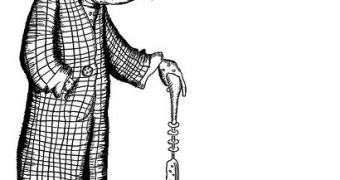Falls among older people are influenced by the fear or perception they have on falling, regardless of their actual fall risk, finds a study published yesterday on bmj.com.
Most older people have an irrational fear of falling, associated with poor balance, depression, anxiety and falls, that has been so far neglected by scientists.
Recently, a team of researchers from Australia and Belgium have carried out a study for better understanding the fear of falling and the impact it has on the actual risk of falls.
At the survey took part five hundred people aged 70 to 90 years, living in Sydney, followed up monthly over a one-year period.
They have underwent extensive medical and neuropsychological evaluations and their actual and perceived fall risks were estimated thanks to recognized scoring scales.
Analysis showed that both actual fall risk as well as perceived fall risk contributed independently to the future risk of an individual.
As the subjects were split in four groups, according to differences between actual and perceived risks, researchers saw that most people had an accurate perception of their fall risk.
Those that had low actual and low perceived risk were considered at low risk of future severe falls and formed the “vigorous” group, and as for subjects in the “aware” group, they were considered at high risk of future significant falls, as they had a high actual and high perceived fall risk.
Still, scientists said that about one third of elderly people either underestimated or overestimated their risk of falls, and the results largely prove it.
They concluded that the “anxious” group had a low actual but high perceived fall risk, and subjects were more exposed to depressive symptoms, neurotic personality traits and poor physical functioning.
On the other hand, the confident group, underestimated falling risks and had a high actual but low perceived fall risk.
This attitude was protective for falling, and related to a positive outlook on life, physical activity, and community participation.
The authors conclude that generally, high levels of perceived fall risk will probably result in future falls, irrespective of the actual risk, and the difference between actual and perceived fall risk add a psychological dimension to risk.
Reducing the fear of falling would simply make older people more confident, and it should not contribute to an actual risk of falls.

 14 DAY TRIAL //
14 DAY TRIAL //